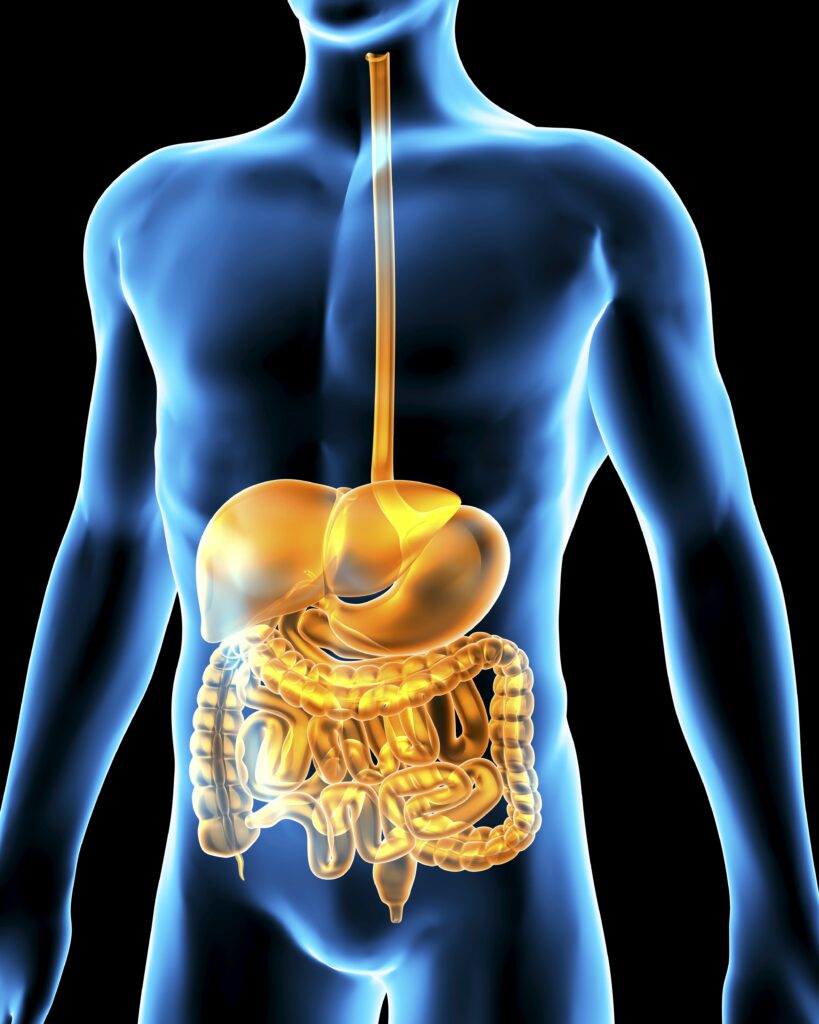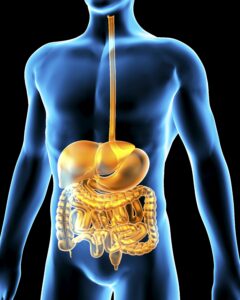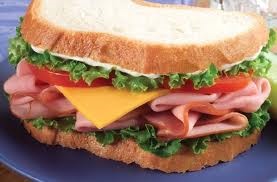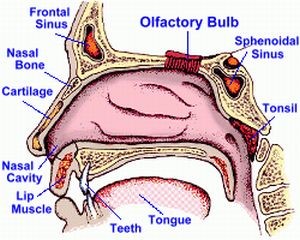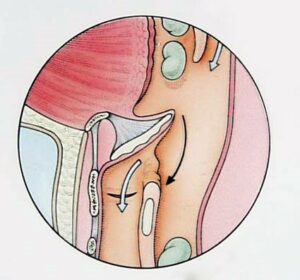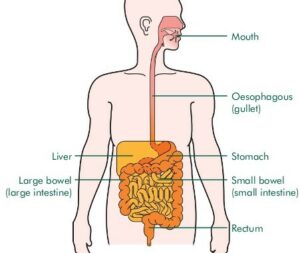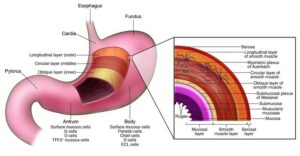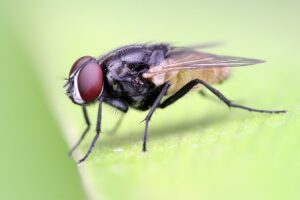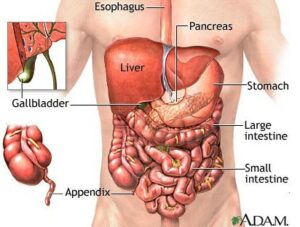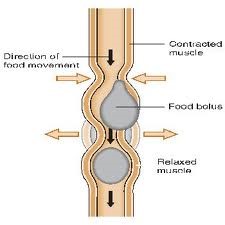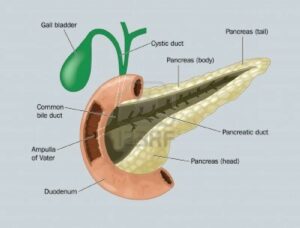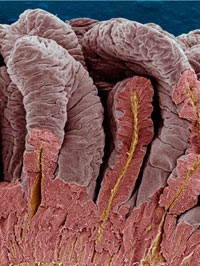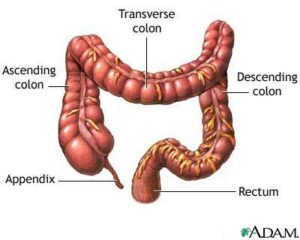The Miraculous Digestive System
By Dr Richard Kent MB BS
www.drrichardkent.org
Email: [email protected]
The Miraculous Digestive system
How do you eat a ham and cheese sandwich?
Image 0 – ham and cheese sandwich
The digestive tract: mouth to the stomach
Let’s say you’ve picked a sandwich for lunch.
Before you even take a bite, your nose smells it and signals the brain, which sends word to the nerves controlling your mouth’s salivary glands.
Image 1 – Olfactory senses
Once the glands have their cue, they get busy secreting juices, making your mouth water.
When you bite into the sandwich, the salivary glands get even more excited and secrete more saliva, making the food moister and easier to swallow.
Image 2 – salivary glands

Amylase
Before the sandwich even leaves your mouth, an enzyme in your saliva called amylase begins to break down the carbohydrates in the bread.
Swallowing
Image 3 – Epiglottis
When you swallow, the sandwich pieces slide down your throat, which is called your pharynx.
They the food comes to a fork in the road:
- One pathway is the oesophagus, which leads to the stomach,
- The other follows the trachea, which leads to the lungs.
- It is obviously vital that fluid food does not go into the lungs, or we would drown or asphyxiate!
- The correct path for fluids and food is through the oesophagus, but sometimes food and fluids can go down “the wrong way”
- So, when we say something went down the “wrong way,” it means it went through the trachea, usually because you were breathing or laughing when you swallowed.
- Not to worry, this rarely happens — the act of swallowing closes the epiglottis, a flexible flap over the trachea.
Image 4 – Epiglottis closing
The Upper Oesophageal Sphincter
The sandwich pieces will normally slide into the oesophagus through the upper oesophageal sphincter, a ring-shaped muscle that opens only when food is swallowed.
Once the sandwich is in the oesophagus, involuntary muscle contractions — or peristalses — push the food toward the stomach.
Question for the evolutionists!
Image 5 – choking to death
- God has designed a very clever pathway so that we do not all choke to death!
- How is this supposed to evolve?
- We would all choke to death during the evolutionary process!
Image 6- Oesophagus
At the end of the oesophagus, the lower oesophageal sphincter lets the food into the stomach. It opens and then quickly closes to keep the food from escaping back into the oesophagus.
If the food does reflux into the oesophagus, we experience heartburn, known as reflux oesophagitis
Question for the evolutionists!
Image 7 – Reflux Oesophagitis
- The stomach acid is about the same acidity as car battery acid!
- God has designed the lower oesophageal sphincter to close so that the stomach acid does not reflux into the oesophagus.
- If we did reflux a lot of acid into our oesophagus, we could easily burn a hole in our oesophagus, which is potentially fatal!
- How do the evolutionists propose that this evolved by chance?
- The mechanism needs to be working properly at the beginning of life, or we would all die.
Image 8 – Stomach
In the stomach, the food begins its preparation for the small intestine.
Glands in the stomach secrete
- Gastric acid,
- Enzymes
- A mucous layer that coats and protects the stomach from its own acids and prevents ulcers.
Why does your stomach not digest itself?
- Your stomach is about the size of a large melon.
- The average adult stomach holds about three litres of fluid.
Image 9 – Stomach layers
Your stomach is made up of a variety of layers, including:
- The serosa – the outer layer that acts as a covering for the other layers.
- Two muscle layers – the middle layers that propel food from the stomach into the small intestine.
- The mucosa – the inner layer made up of specialized cells, including parietal cells, g-cells and epithelial cells.
- Parietal cells produce hydrochloric acid, with a pH of 1.5 to 3.5. This is a strong acid that helps to break down food.
- The acid in your stomach is so concentrated that if you were to place a drop on a piece of wood, it would eat right through it!
- The gastrin cells produce gastrin, a hormone that facilitates the production of hydrochloric acid by the parietal cells.
- The stomach is protected by the epithelial cells, which produce and secrete a bicarbonate-rich solution that coats the mucosa.
- Bicarbonate is alkaline, a base, and neutralizes the acid secreted by the parietal cells, producing water in the process.
- This continuous supply of bicarbonate is the main way that your stomach protects itself from the stomach digesting itself and the overall acidic environment.
- The stomach’s smooth muscles contract about every 20 seconds, stirring up the acid and enzymes and turning your sandwich into a liquefied bolus of food.
- Your liquefied sandwich, however, can be out of the stomach in a mere 20 minutes next stop: the small intestine.
Question for the evolutionists!
Image 10 – a housefly
- We need a very acid environment in the stomach to digest the food.
- It must not be too acid, or it will destroy the food completely.
- This acid kills potentially lethal food!
- If you accidentally swallow a housefly, which is loaded with bacteria, the fly is instantly killed, as well as the bacteria, by the acid.
- If this did not happen, we would probably all die of food poisoning within a week!
- How do the evolutionists propose that this all happened by chance, and instantly!
The large and small intestines
Image 11 – Intestines
The large intestine is the large tube around the outside of the small intestine.
The bolus of food now moves into the duodenum, the first part of the small intestine.
Peristalsis
Image 12- Peristalsis
- The digestive system is, in essence, a long tube that starts at the mouth.
- This tube connects with the various organs and passages that play important roles in digestion.
- Waves of muscle contractions move and push the contents continually downward in a process called peristalsis.
- This is a very complicated series of progressive contraction and relaxation of smooth muscle.
- I have absolutely no idea how evolutionists believe this all happened by chance!
- The contractions help churn food, liquid and different digestive juices together
Peristalsis is caused by the release of acetylcholine and adrenaline from intrinsic nerves, causing muscles to contract and relax, so moving food through the long digestive tract.
- Intrinsic nerves are embedded all along the digestive tract, from the oesophagus to the colon.
- Acetylcholine causes these organs’ muscles to contract and move food through that long digestive tract.
- Adrenaline, on the other hand, relaxes these muscles when no food is in the system.
- The intrinsic nerves are stimulated when food stretches the walls of the intestines.
- Stretching of the bowel stimulates the intrinsic nerves to release the neuro-transmitters (acetylcholine and adrenaline) that can either speed up or slow down the digestive process.
- I have absolutely no idea how evolutionists believe this all happened by chance!
Image 13- the duodenum
The food is further broken down with
- Enzymes from the pancreas
- Bile from the liver.
- Peristalsis helps mix up these juices.
Jejunum and ileum
Image 14 – jejunum and ileum
- The next small intestine section is the jejunum, followed by the ileum, which leads straight to the large intestine.
- These two sections absorb nutrients and water more than they break down food.
- The small intestine has a smaller circumference than the large intestine, but it’s actually the longer of the two sections — it has the surface area of a tennis court!
- The surface of the small intestine has many tight folds that can absorb nutrients and water — they greatly increase the surface area.
- These folds are covered with villi, or tiny projections that have even smaller microvilli on them.
- Transit time in the stomach and small intestines is only a few hours.
Image 15- Villi
Villi and microvilli have affinities for specific nutrients.
That means that several different kinds of villi will grab the nutrients, electrolytes and dietary molecules in your sandwich
- Carbohydrates and folic acid from the bread,
- Protein and sodium from the ham,
- Calcium and vitamin B12 from the cheese
- The absorbed nutrients move through the wall of the intestines and into blood vessels that take them throughout the body.
The Large intestine
Image 16- Large intestine
- The residual waste is transported into the large intestine, the final stretch of the digestive process.
- The large intestine absorbs extra fluid to produce the solid waste.
- To move the waste, the colon uses peristalsis.
- It takes days for waste to move through the large intestine — the waste moves at a pace of about 1 centimetre per hour
- First is a pouch called the caecum, with the attached appendix.
- Next comes the colon, which has three sections: ascending, transverse and descending.
- In the first two sections, salts and fluids are absorbed from the indigestible food.
- Billions of bacteria that normally live in the colon help to ferment and absorb substances like fibre.
- While these tracts absorb, they also produce mucous that helps move the waste products easily through the descending colon and into the third part of the large intestine: the rectum.
- Here, your waste products wait to be excreted in your next bowel movement.
The digestive process is controlled by hormones
Hormones control the regulation of the entire digestive process.
The hormones produced in the mucosa cells of the stomach and small intestines work by stimulating these organs and their digestive juices.
The three hormones responsible for the digestion of your sandwich are
- Gastrin
- Secretin
- Cholecystokinin (CCK)
- Ghrelin
- Peptide VV
Gastrin
- Stimulates the stomach to produce acid,
- Stimulates growth of the lining of the intestines.
Secretin
- Stimulates the pancreas to excrete digestive juices.
- Stimulates the stomach, causing it to produce pepsin, an enzyme used to digest protein.
- Stimulates the liver to produce bile.
Cholecystokinin
- Stimulates the pancreas to grow and produces more enzymes.
- Stimulates the gallbladder to release bile
Ghrelin
- Is produced by the stomach and small intestine produce when there is no food in them, stimulating your appetite.
Peptide VV
- Works in the opposite manner.
- Is excreted when there is food in your stomach to quell your hunger.
Absorption and transport of nutrients
Carbohydrates:
- Remember that ham and cheese sandwich we followed earlier?
- The bread is made up largely of carbohydrates, which begin to break down when you take that first bite.
- The carbohydrates continue to be broken down by the digestive juices in the pancreas and small intestine lining and are then absorbed in the small intestines, where they enter the bloodstream.
- This breakdown produces glucose, which is stored in the liver and provides you with energy.
Protein:
- The ham consists of protein molecules that need to be digested — protein is the key player in building and repairing your body tissues.
- Enzymes first attack these molecules in the stomach, and they are further digested in the small intestine, with help from enzymes and juices from the pancreas and intestinal lining juices.
- Then the smaller protein molecules become known as amino acids.
- Amino acids are now small enough to be absorbed through the small intestine and right into the blood.
Vitamins:
While our food is digested, vitamins are absorbed in the small intestine.
There are two basic types of vitamins in the food we eat: water-soluble and fat-soluble.
- The water-soluble vitamins (b vitamins and vitamin c) are absorbed easily along with the water in the small intestine, where they then travel through the body via the blood vessels.
- Water-soluble vitamins don’t stay in your body for long — extra amounts of these are usually eliminated.
- Fat-soluble vitamins (vitamins a, d, and k) are absorbed just like the fat mentioned above.
- Once absorbed, however, they are stored for long periods of time in cells called lipocytes.
How fast your food digests
Transit time of various food through the entire alimentary canal
- Banana: four hours
- Bowl of cereal: four hours
- Hot dog: seven hours
- Red meat: 12 hours
Psalm 139:14
“I praise you because I am fearfully and wonderfully made”
Isaiah 40:28-31
Have you not known?
Have you not heard?
The everlasting God, the Lord,
the Creator of the ends of the Earth,
neither faints nor is weary.
His understanding is unsearchable.
I hope you have enjoyed this teaching and associated YouTube videos
God bless you!
Richard
Dr Richard Kent
www.drrichardkent.org
If you have any comments or questions, please send an e-mail to: [email protected]
